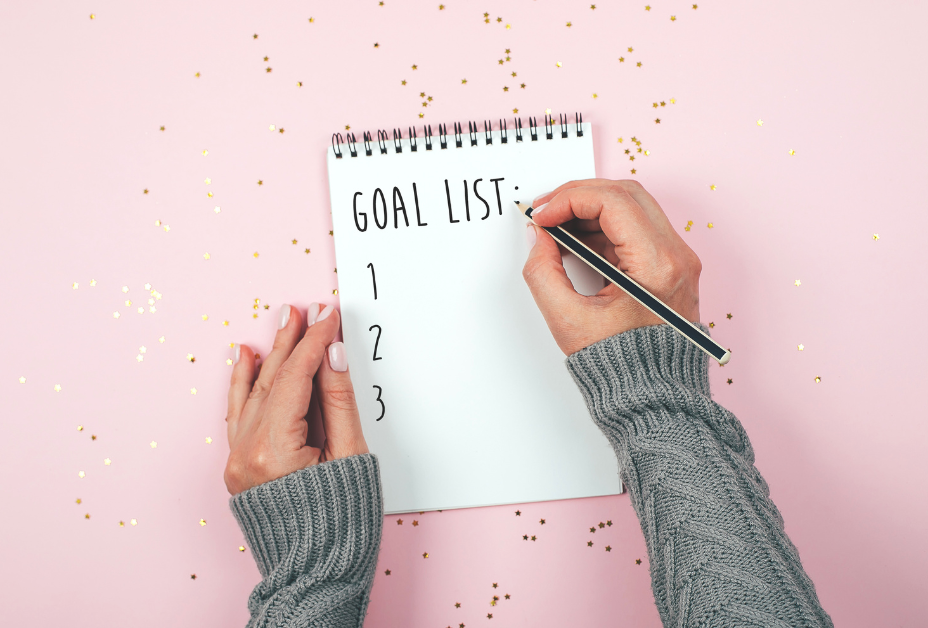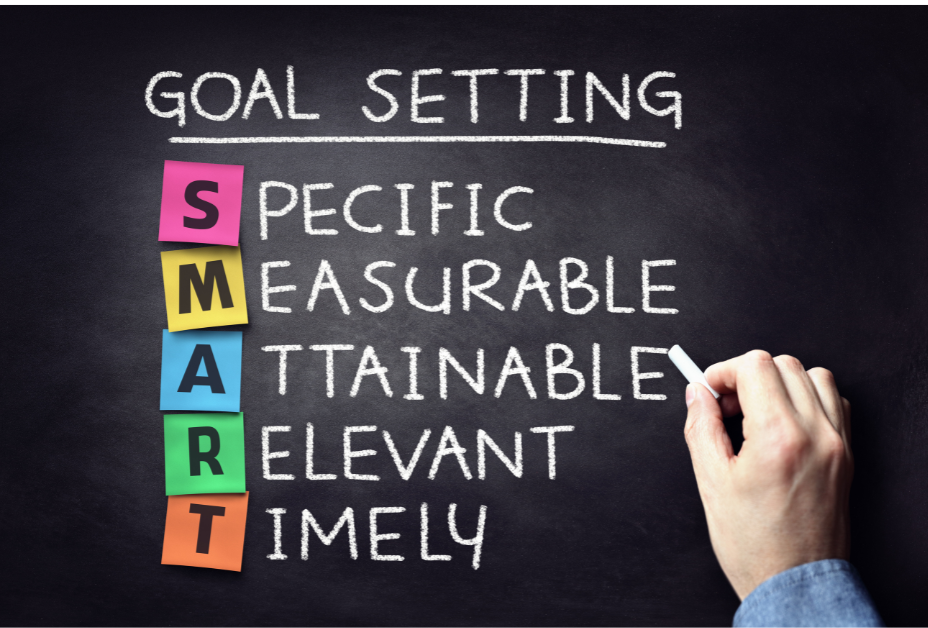The teenage years are transformative, filled with growth, change, and the development of life-defining skills. Goal-setting can help teens navigate this crucial period by providing direction and structure. One of the most effective ways to support teens during this time is by helping them set and achieve meaningful goals. Goal-setting is more than just ticking off tasks; it’s a powerful tool that can influence a teen’s academic performance, physical health, and emotional well-being.
Research shows that effective goal-setting not only helps teens academically but also positively influences their physical health and emotional resilience. It sets teens up for long-term success by equipping them with the tools they need to build self-confidence, improve self-discipline, and stay motivated through life’s challenges.
Let’s have a look at the profound impact that goal-setting can have on teenagers, drawing from key research and practical advice on how teens and parents can make the most of this valuable tool.

Goal-Setting Enhances Executive Function and Academic Success in Teens
One of the most important benefits of goal-setting for teens is how it helps strengthen executive function. Executive functions are the mental processes that help us plan, focus, remember instructions, and manage multiple tasks. For teens, especially those with learning disabilities, these skills don’t always develop naturally. They need structured support to foster their ability to plan and organize effectively.In Targeting the Transition Goals of Teens Through Executive Function Support (2024), Payne and Swanson outline strategies for supporting teens in developing executive function skills, such as planning and time management. Their research highlights that when teens set specific goals—like improving their study habits or organizing their time—they are practicing executive function. This structured practice enables teens to build routines, use time-management tools, and break down larger projects into manageable steps.
How Goal-Setting Helps Struggles with Organization
Avery, a grade 10 student, often felt overwhelmed by her school workload. She struggled to keep track of assignments and frequently missed deadlines, which added to her stress. We decided to work on setting small, manageable goals to help Avery improve her study habits. Together, we set a goal: “I will spend 10-20 minutes reviewing my math notes every day after school.”
This specific, daily goal helped Avery break down her study sessions into focused, manageable chunks. Over time, Avery developed a routine that made studying less daunting, improved her grades, and reduced her anxiety about falling behind. By gradually building up her study habits, she not only improved her time management but also gained confidence in her ability to handle her academic workload.

Strategies to Support Executive Function Through Goal-Setting:
- Build Consistent Routines: Routines reduce cognitive load and provide a predictable structure, making it easier for teens to focus on their long-term goals.
- Try Sensory Reminders: Alarms, timers, or visual reminders can help teens manage their time and reduce procrastination.
- Use Planning Tools: Digital apps or planners can help teens break down larger tasks, track their progress, and adjust as needed.
For teens facing academic pressures or organizational challenges, embedding goal-setting into daily routines can have a significant positive impact. It helps them manage stress, prioritize tasks, and build habits that contribute to long-term academic success.
Goal-Setting for Physical Fitness: Supporting Teens’ Health and Confidence
Physical fitness is another key area where goal-setting makes a significant impact. Teenagers who set clear, attainable goals around their physical health are more likely to stay motivated and make tangible progress. In Effects of a SMART Goal Setting and 12-Week Core Strength Training Intervention on Physical Fitness in Adolescents (2022), Lu, Yu, and Gan explored how combining SMART goal-setting (Specific, Measurable, Attainable, Relevant, Timely) with a core strength training program improved fitness outcomes in adolescents. The results were clear: teens who set specific fitness goals saw noticeable improvements in their strength and endurance.
Setting Fitness Goals for Teens
William, a 14-year-old who wasn’t particularly athletic, often felt left out during gym class. He wanted to improve his fitness but didn’t know where to start. We worked together to set a SMART goal: “I will jog for 15 minutes, two-three times a week, for the next month.” This goal was specific, attainable, and allowed William to track his progress without feeling overwhelmed.
After a month, William was not only jogging regularly but also feeling more confident. He decided to extend his goal to include light strength training, which further improved his physical fitness. The process of setting and achieving small goals helped William realize that he could improve his health in manageable steps, building his self-esteem along the way.
Why Physical Fitness Goals Matter:

- Building Confidence: Achieving physical goals, like increasing endurance or strength, provides teens with a sense of accomplishment that extends beyond fitness. It reinforces the idea that with effort and a clear plan, they can achieve results in other areas of their life.
- Improving Mental Health: Regular exercise, when combined with goal-setting, supports better mood regulation, improved sleep, and reduced stress. This holistic approach sees physical health not just as a goal but as a foundation for emotional and cognitive well-being.
Setting and achieving fitness goals helps teens develop resilience, learn to overcome setbacks, and build a sense of mastery that enhances their overall well-being.
Building Emotional Resilience in Teens Through Goal-Setting
Adolescence is a time of heightened emotions and complex social dynamics. Many teens struggle with uncertainty, stress, and self-doubt. Goal-setting can provide structure and clarity during these moments, giving teens a sense of control and direction. While physical and cognitive benefits are essential, goal-setting also plays a vital role in developing emotional resilience.
In Fostering Healthy Futures for Teens (2015), Taussig, Weiler, and colleagues demonstrated how structured goal-setting programs help teens manage stress, regulate emotions, and build positive relationships. Teens who set and achieve personal goals—whether related to academic success, personal growth, or social skills—develop a stronger sense of self-efficacy, which is critical for navigating setbacks.
Emotional and Social Goal-Setting: Dealing with Social Anxiety
Chloe, a 16-year-old, often felt anxious about speaking up in class. She worried about saying the wrong thing and being judged by her peers. This anxiety made her hesitant to participate in class discussions or contribute to group projects. Together, we set a simple goal: “I will put up my hand to answer one question in class each week and speak up at least once during group work.”
Starting with this manageable goal, Chloe slowly began to build confidence. The first time she raised her hand in class, it was a small but significant step. Over time, she became more comfortable sharing her ideas, and her contributions during group projects became more frequent. This goal-setting approach allowed Chloe to make gradual progress, helping her manage her anxiety and feel more engaged in her classes.
How Goal-Setting Supports Emotional Resilience:
- Provides a Sense of Control: By focusing on attainable goals, teens can direct their energy toward areas they can influence, which is especially important when external circumstances feel overwhelming.
- Promotes Self-Reflection: Reflecting on their goals and progress helps teens recognize their strengths and areas for growth, fostering emotional maturity and self-awareness.
Setting goals helps teens handle stress more effectively, build healthier social relationships, and maintain a positive outlook even when faced with challenges.
Note: Names have been changed to protect the privacy of the individuals involved.

Practical Tips for Parents and Teens to Support Goal-Setting
Understanding the benefits of goal-setting is one thing, but implementing it effectively is another. Here are some practical strategies based on the research that parents and teens can use to set and achieve meaningful goals:
For Parents:
- Encourage a Growth Mindset: Help your teen see challenges as opportunities for growth. Remind them that setbacks are a natural part of progress, and what matters most is persistence.
- Break Down Goals Together: Large, long-term goals can feel overwhelming. Encourage your teen to break down bigger goals into smaller, manageable steps, making progress more attainable and providing opportunities to celebrate small wins.
- Promote Routine-Building: Work with your teen to develop daily or weekly routines that support their goals, whether it’s allocating time for homework, exercise, or personal hobbies.
- Encourage Regular Reflection: Ask your teen to reflect on their goals regularly—what progress have they made? What challenges are they facing? Reflection helps teens stay connected to their long-term vision.
- Model Goal-Setting: Share your own goals with your teen, showing them that goal-setting is a lifelong skill that can benefit all areas of life.
For Teens:
- Set SMART Goals: Start with the SMART framework—make your goals Specific, Measurable, Attainable, Relevant, and Timely. This approach helps you stay focused and motivated.
- Break Goals into Smaller Steps: Large goals can be daunting. Breaking them into smaller, actionable steps allows you to celebrate progress along the way.
- Track Your Progress: Use a journal or an app to keep track of your progress. Seeing your achievements can motivate you to keep going, even when things get tough.
- Stay Flexible: Life is unpredictable, and sometimes goals need to change. Don’t be afraid to reassess your goals if necessary and focus on the progress you’ve made rather than setbacks.
When parents and teens work together on goal-setting, they create a supportive environment that fosters growth, self-discipline, and resilience.
Goal-setting is more than just a tool for productivity; it’s a holistic strategy that shapes a teen’s cognitive, physical, and emotional development. The benefits of goal-setting are profound, influencing everything from academic performance and physical fitness to emotional resilience and social relationships.
Encouraging teens to set and achieve their own goals not only prepares them for success in school but also equips them with essential life skills. By supporting teens in this journey, parents can help foster independence, self-confidence, and resilience—qualities that will serve them well throughout their lives.
Take the Next Step in Supporting Your Teen’s Success
Are you ready to help your teen achieve their full potential with personalized support? I offer individualized coaching packages tailored to your teen’s unique needs, whether they’re looking to improve their academic performance, build self-confidence, or develop resilience. Personalized guidance helps teens set meaningful goals and work towards success with the tools they need to thrive.
If you’re not sure if one-to-one coaching is the right fit, join one of my free workshops, designed to provide practical strategies for teens and parents. These workshops are a great starting point for exploring how goal-setting can make a difference. If there are no upcoming workshops listed, please subscribe to my newsletter to be notified.
Book your one-to-one session today or sign up for a free consultation to learn more!
Want more tips on supporting your teen? Subscribe to my newsletter for actionable strategies, exclusive content, updates on upcoming workshops, and insights on how to support your teen throughout the year.
References
Lu, Yu, and Gan. “Effects of a SMART Goal Setting and 12-Week Core Strength Training Intervention on Physical Fitness in Adolescents.” *Journal of Physical Education and Health*, vol. 22, no. 3, 2022, pp. 145-158.
Payne, S. Blair, and Elizabeth Swanson. “Targeting the Transition Goals of Teens through Executive Function Support.” *Teaching Exceptional Children*, vol. 56, no. 4, 2024, pp. 202-209. SAGE Publications.
Taussig, Heather N., Sarah Weiler, et al. “Fostering Healthy Futures for Teens: Adaptation of an Evidence-Based Program.” *Journal of Youth and Adolescence*, vol. 44, no. 4, 2015, pp. 870-885.










